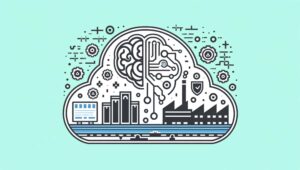Many opportunities for highly specialized solutions in the AI world are enabled by the possibility to create models for certain tasks. OpenAI, a major research lab specializing in this area, has launched a number of upgrades its fine-tuning API and has also extended its Custom Models program, where developers can make use of the API for a variety of solutions. The advancement facilitates the developers with the feature of applying the power of LLM and the state-of-the art technology and introducing it in tailored to suit specific needs and shape the new era of AI customization.
One of the most vital factors of successful security systems today is the ability to customize a system to fit each individual need.
Conventional AI methods are widely applied to cover the whole range of ordinary tasks. Though they have the ability to perform tasks in fields at minimum level of their effectiveness, the downsides are that systems must be specially designed for specific domains. Customization techniques will help developers to narrow these wide ranges of models in order to use them for the production of new and more specific cases.
There are several compelling reasons to customize AI models:
- Enhanced Accuracy: This enables models to be moulded in the class of data to domain-specific use, thus refining the level of conceptualization and adequacy of context. Within this narrow training these models sharply increase their accuracy while performing the indicated task.
- Reduced Latency: The same costs are traced to the generic AI models being computationally demanding, hence decreasing response speed. Customization is ideal since it can cater the model to do the specific job and help in optimizing the working which in turn will have minimum latency.
- Cost Efficiency: A widely spread method with the only aim of training and deploying big general-purpose models can be a resource-consuming one. Be flexible, also known as customization, needs fewer data and tools for running, which make this more affordable solution.
OpenAI’s Fine-Tuning API: Putting the power into Customization of Self-serve
OpenAI’s adjusting API offer developers a human interface which has way more customization options to tasks tailoring. The API fetches OpenAI’s advanced technology in a simple to use, and easy to integrate manner thus, the developers do not require to pay a lot of attention to the intricate aspects of AI technology.
The task-specific customization feature is implemented using fine-tuning API that allows to feed the model with task-specific details and guidance. The model consequently optimises its parameters using this data by repeating such an action until it accomplishes the stipulated task. This approach provides developers with the toolset to build AI solutions tailored the needs of their business, eliminating the intricate challenges involved in model creation.
The following are the changes that I propose to be made to the Fine-Tuning API
OpenAI’s recent enhancements to the fine-tuning API focus on improving usability, efficiency, and scalability:OpenAI’s recent enhancements to the fine-tuning API focus on improving usability, efficiency, and scalability:
- Simplified Workflow: The addition of the API gave it a sleeker user interface, allowing for a more simplified workflow, making it simpler for users to start fine-tuning. Documentation is to be made clearer, error handling has to be improved, as well a more intuitive user interface is to be developed.
- Enhanced Performance: The UAC (Underlying Architecture for Customization) has been refined in order to shorten the tuning cycle. Developers will get to train and design faster and be able to put their handiwork on display sooner than later.
- Expanded Capabilities: The API has gained the ability to tackle tasks that go beyond the basic and it can work with multiple architectures, allowing the developers to implement into their systems whatever they deem suitable.
The Custom Models Program: A Consensual Vision for Personalized Constructs
A development program called “Custom Models” with which the OpenAI team is able to create models responsive to specific requirements of a particular project or to those that involve the analysis of difficult data sets is an example of the company’s collaborative approach. This program unlocks the possibility for the engineering teams to collaborate with OpenAI scientists in a way that allows them to uniquely co-create AI models that respond to their business-defined goals.
OpenAI implemented Custom Models that are custom input models by the developer and one of the AI team members of OpenAI. This collaborative approach offers several advantages:This collaborative approach offers several advantages:
- Access to Expertise: The OpenAI’s researchers help developers to make use of the provided guides and consultancy on issues regarding model selection, pre-processing data, and tuning parameters for optimized training.
- Complexities Addressed: The yomething program deals with issues related with working with big or private datasets and is preserving the safety and protection of privacy throughout the process of customization.
- Scalability for Demanding Tasks: Custom Models program is capable of carrying out, high scale projects that require many hidden computational processes and skills.
The technology behind custom AI models determines their success and limitations in solving complex problems.
Targeted fine-tuning and the Custom Models program of OpenAI demonstrate the upward movement toward an accessible environment, in which everyone can use the valuable AI applications. This enhancement in understanding and inference of AI models empowers the developers to make the appropriate modification as per real-world applications. This brings the felicitous step in the technological progress across industries.
AI will be advanced, and correspondingly custom models will more often be brought to production than ones developed partly or completely by humans. Customizing AI solutions in bringing specific requirements for organizations will be key to their competitive advantage in the environment where the technological landscape is fast-changing.
Applications with a Specific AI Models.
The creation of AI model which is customized to its goal is huge and is observed not only in one of the areas. Here are a few examples:Here are a few examples:
- Healthcare: Custom made AI models can be applied to tasks which include butare not limited to medical diagnosis, drug discovering and treatment customization.
- Finance: Custom-made models could be for instance designed to monitor of financial markets, detecting only fraud and automated investment decisions.
- Manufacturing: AI algorithms are capable of difficult, as in campaigning for a position that requires some expertise like in production campaigns.



